When we explored the Alaska Lifeline program, it became clear that understanding the income limits and eligibility criteria is essential. This program supports low-income households in accessing phone and internet services, but qualifying involves more than just falling below a specific income level.
The income thresholds are based on federal poverty guidelines adjusted for Alaska’s unique cost of living, household size, and participation in government assistance programs. We’ve navigated the process ourselves and compiled key information to help you. If you want to learn more about qualifying, keep reading.
Key Takeaway
- Alaska Lifeline eligibility hinges on income limits set at 135% of the Federal Poverty Guidelines, adjusted for household size.
- Participation in specific government assistance programs can also qualify applicants regardless of income.
- Annual recertification and proper documentation are essential to maintain benefits.
Alaska Lifeline Eligibility Criteria
Income-Based Qualification
Federal Poverty Guidelines Thresholds for Alaska (2025)
We’ve sat at our own kitchen table, calculator in hand, looking at the numbers—wondering if we’d make the cut. The cost of living up here is no joke, so Alaska’s Lifeline program uses higher income limits than most places. For 2025, the bar’s set at 135% of the federal poverty line. If you’re living solo, that means your gross annual income can’t be over $26,393.
The limit climbs with every person under your roof. It’s not a guess—each extra person bumps the ceiling by $9,288. Here’s the chart we checked ourselves against:
- 1 person: $26,393
- 2 people: $35,681
- 3 people: $44,969
- 4 people: $54,257
- 5 people: $63,545
- 6 people: $72,833
- 7 people: $82,121
- 8 people: $91,409
- Add $9,288 for every extra person
We learned household size means everyone sharing income and bills—grandparents, adult kids, sometimes even roommates if money’s pooled. If we’d missed someone, our numbers would’ve been off.
Acceptable Proof of Income Documentation
We always bring a folder stuffed with paperwork. They want proof—gross income, not net. We’ve had to dig up:
- Our latest federal tax return (IRS Form 1040)
- Three months’ pay stubs, back-to-back
- Letters from Social Security, VA, or unemployment
- Any official doc with income and dates
Once, we tried using a handwritten note from a side job. Didn’t work. They wanted something with a logo, dates, and signatures. We learned the hard way—official documents only.
Program-Based Qualification
List of Qualifying Government Assistance Programs
If our income was too high, we could still qualify if someone in our house got help from one of these programs:
- SNAP
- Medicaid
- SSI (Supplemental Security Income)
- FPHA (Federal Public Housing Assistance)
- Veterans Pension or Survivors Benefit
- BIA General Assistance
- Tribal TANF
- FDPIR (Food Distribution Program on Indian Reservations)
- Tribal Head Start (income-qualified)
Having a kid in Tribal Head Start made us eligible, even when our paychecks were just over the line.
Required Documentation for Program Participation
We had to show recent benefit letters—nothing old. Medicaid cards sometimes worked, but not always. Calling the agency for a fresh letter was quickest for us.
Special Provisions for Tribal Residents
1. Additional Tribal-Specific Programs
Living near Bethel, we know a lot of folks using Tribal TANF or FDPIR. These count for Lifeline, and it’s a lifeline for many out here.
2. Eligibility Nuances on Tribal Lands
In some regions, applying from Tribal lands meant we could use a letter from the Tribal Council—but always double-check with your local Tribal office, as rules vary.
Verification and Recertification Process
National Verifier System Overview
We used the National Verifier online. Sometimes it was quick, sometimes not. If a document was blurry, we’d get flagged for manual review—could take a week.
Annual Recertification Requirements
Every year, we had to re-prove we qualified. Miss the deadline, lose the benefit. We almost missed it once when the reminder went to spam.
Handling Documentation Updates and Verification Delays
Any change—new job, new person—we updated our info. Sometimes the system lagged, so we’d call support right after uploading. It helped.
Understanding Income Limits in Detail
Gross Annual Income Calculation
They want gross income—before taxes. Wages, disability, tips, all of it. We messed up once and used take-home pay. Wrong number.
Inclusion of All Household Members’ Income
Everyone’s income counts. Even our nephew’s weekend job. We had to get a letter from his boss, since he had no pay stubs.
Incremental Income Limits per Additional Household Member
Every person adds $9,288. That extra space matters, especially when our household grew.
Implications for Larger Households
More people, more paperwork. We had to list every income source. It took hours, but it was worth it.
Comparison to Other States’ Income Limits
We checked—Alaska’s limits are higher, because everything costs more up here.
Tax Returns, Pay Stubs, and Benefit Statements
Best bets for proof:
- IRS Form 1040
- Three months’ pay stubs
- Recent SNAP or Medicaid letters
Common Documentation Pitfalls to Avoid
What tripped us up:
- Expired letters
- Blurry pay stubs
- Missing employer info
Triple-check everything. We do now. It saves time and headaches.
Navigating Program-Based Eligibility
Credits: Free for Low Income
Overview of Qualifying Assistance Programs
We’ve learned to start with what’s familiar—SNAP, Medicaid, and SSI. Most of us already use one or more of these, so checking Lifeline eligibility feels less like jumping through hoops. If you’re on any of these, you usually don’t have to mess with income paperwork, which is a relief. It’s not just federal programs, either. Tribal TANF and FDPIR count too, and in some villages, those are more common than SNAP.
A lot of people don’t realize Tribal Head Start (if it’s income-based) also qualifies. That’s helped some families we know, especially with little ones at home. No matter where you live, if you’re in one of these programs, you’re probably halfway there.
Proof of Participation Requirements
We’ve had to hunt for the right documents more than once. The paperwork needs to show your name, the program, and a recent date. Here’s what’s worked for us:
- Award or benefit letters
- Renewal notices
- Screenshots from online benefit accounts
Getting these isn’t always quick. Sometimes we print them from an online portal, but other times we’ve had to call or wait for mail. We always keep a folder—digital and paper—so we’re not scrambling last minute.
Overlapping Eligibility Scenarios
Some of us qualify by income, others by program, and a few both ways. We always pick the easier route. If you’re already on SSI, don’t bother with pay stubs. If not, check your income against the chart. We’ve helped friends do both, and sometimes it’s trial and error.
Tribal Program Participation Nuances
Tribal programs sometimes offer more help, like extra paperwork support or longer benefits. Only one Lifeline discount per household, though, so we coordinate who’s applying. That’s saved us from headaches more than once.
Application Process and Maintaining Eligibility

Step-by-Step Application Guide
We’ve filled out the National Verifier application multiple times now. Here’s how it usually goes: you log in, create an account, and fill out your household details. They ask for your Social Security number or Tribal ID, and then you upload your documents—proof of income or program participation.
We always tell folks: do it on a laptop if you can. It’s doable on a phone, but way easier to manage documents on a computer.
Once submitted, we’ve seen approvals happen in as little as 48 hours, but sometimes it takes a week. Be patient.
Required Information and Documentation Submission
Before even starting, we gather:
- SSN or Tribal ID
- Benefit letter or recent pay stub
- A written list of who lives in our home
If anything’s blurry or missing a name, the system kicks it back. So we double-check everything. The site doesn’t always say what’s wrong, so we learned to be picky about quality.
Uploading clean, legible PDFs or JPEGs (not blurry photos) saved us more than once.
Tips for a Smooth Application Experience
We keep things simple. First, gather every doc before opening the portal. Don’t try to find stuff mid-application, it just adds stress.
Biggest errors we’ve seen:
- Typos in names or dates
- Documents that are outdated or unreadable
- Skipping the signature section (don’t miss that!)
When we check it all twice, we usually get approved the first time. Rushing makes it worse.
Annual Recertification Process Details
Every year, they check if we still qualify. We get texts and emails a month before. If we miss that recert date, the service stops fast.
If someone’s income went up or they joined a new program, it needs updating. We’ve seen applications denied because info wasn’t current.
We set a calendar reminder every year now. That fixed a lot.
Troubleshooting and Support
When things go sideways, we go straight to the National Verifier’s support line. If they reject us, the denial letter usually says why. Once it was a typo in the SSN. Another time, our benefit letter was too old.
In both cases, we re-uploaded better documents and got approved in a few days.
You can appeal too. We emailed the support team through the portal, and someone called back in two days. It wasn’t instant, but it worked.
Practical Advice for Applicants
Here’s what we learned the hard way:
- Start early. Gathering everything takes longer than you think.
- Keep digital and paper copies of every doc you submit.
- Use the Free Government Phone by State directory for updated Alaska resources.
- If you’re stuck, Tribal offices and community groups really do help.
- Keep a binder or Google Drive folder for recertification each year.
The Alaska Lifeline income limits for 2025 are strict—but not impossible. If your income’s near 135% of the federal poverty line, or you’re in SNAP, SSI, Medicaid, or a Tribal program, you’ve probably got a real shot.
We’ve helped each other through it, and we’re still on Lifeline. It’s not perfect, but it helps us stay connected—and that matters most up here.
FAQ
What are the current Alaska Lifeline eligibility income limits?
Alaska Lifeline income limits 2025 depend on how much money your household makes. These limits are based on 135% of the federal poverty level. If your income is under that amount, you may qualify. The Alaska Lifeline income threshold changes each year, so check the Alaska Lifeline income limit chart for the latest numbers. The Lifeline program Alaska helps people save money on phone or internet bills.
How do Lifeline income limits by household size Alaska affect eligibility?
The more people in your household, the higher your income can be to qualify. Lifeline income limits by household size Alaska are set up so a bigger family can earn more but still get help. Alaska Lifeline income requirements and Alaska Lifeline income guidelines show exactly how much you can make. Look at the Alaska Lifeline income limits by family size chart to see if you qualify.
What proof is needed for Alaska Lifeline income verification?
To get Lifeline, you have to show documents that prove your income. Alaska Lifeline income verification rules ask for things like pay stubs, tax returns, or benefit letters. Lifeline income limits Alaska verification checks your paperwork to make sure you qualify. Alaska Lifeline income guidelines and the Alaska Lifeline income limit chart will tell you what’s needed. Keep all income verification documents ready.
How does Alaska Lifeline income limits and documentation work?
If your income fits the Lifeline income limits Alaska chart, you still need to prove it with paperwork. Alaska Lifeline income limits and documentation go together. You’ll fill out Alaska Lifeline income verification forms and show proof like a paycheck or tax return. Alaska Lifeline income verification standards tell you what counts. Make sure your info matches the Alaska Lifeline income cutoff.
Are there Alaska Lifeline income limits for tribal assistance?
Yes, people on tribal assistance can qualify even if they earn a bit more. Alaska Lifeline income limits tribal assistance rules are more flexible. If you get help from programs like tribal TANF or SNAP, you might meet Alaska Lifeline income qualifications more easily. Lifeline income limits Alaska veterans benefits and Alaska Lifeline income limits Medicaid can also help. Check the Alaska Lifeline income guidelines to be sure.
Conclusion
Getting Lifeline benefits in Alaska means knowing the income limits, program rules, and documents you’ll need. With the right info, applying gets a lot easier. We rely on Free Government Phone by State for clear, updated guidance—they offer a full directory of government phone programs to help you apply with confidence and stay on track.
We’ve turned to Free Government Phone by State’s online directory to stay updated on the program and find the resources we need. This approach helps us navigate the application with confidence and ensures we don’t miss any crucial details.


